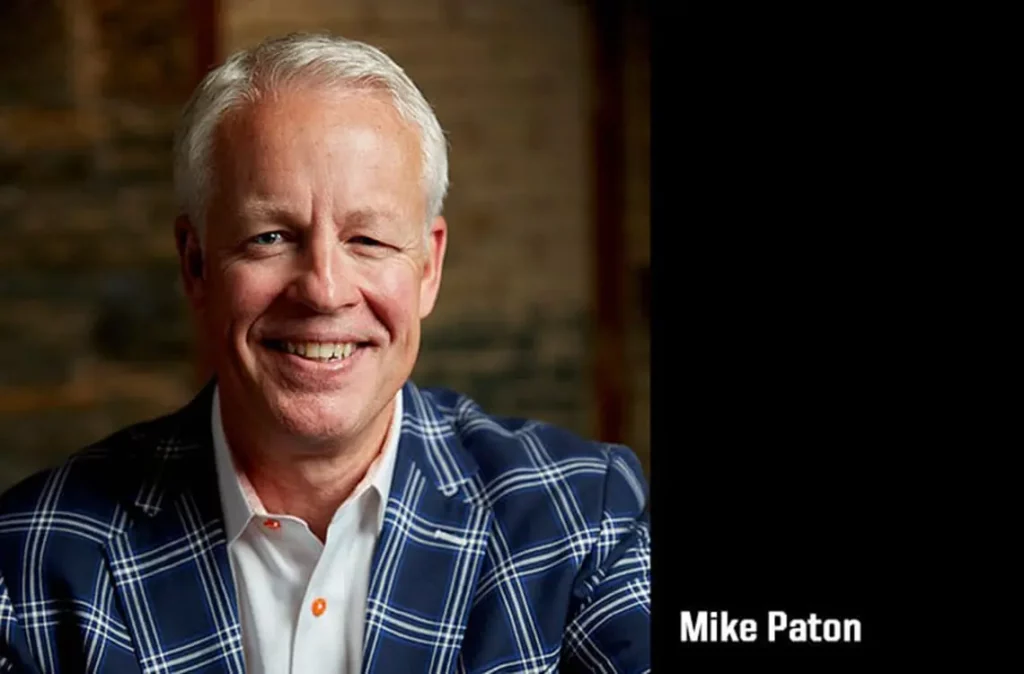It’s rare to meet someone who hasn’t at least heard of the book Traction, by Gino Wickman. The book describes the Entrepreneurial Operating System® (EOS) – a philosophy and method for running a small to medium sized business.
In fact, the Twin Cities are known for having a significant population of companies using EOS, as well as consultants, called Implementers, who help companies move to EOS. It probably doesn’t hurt that members of the leadership of EOS Worldwide, the organization that fuels the EOS ecosystem, is based here in Minnesota!
Gino Wickman might have kicked off the EOS movement, but today it’s Mike Paton who is the defacto EOS guru. As Visionary for EOS Worldwide, he is the chief advocate and practitioner of the EOS way of doing business.
We were delighted and grateful to be able to talk to Paton. Below is a transcript of our conversation. Enjoy!
+++
In addition to running EOS Worldwide, you’re still an active Implementer.
Yeah. I’ve got a small stable of clients. I do about 60 to 70 days a year with a handful of clients. And I believe it would be very difficult to run this company if I weren’t also a practitioner because what we do is recruit and train and support people who do that work every day.
Ours is a group of really talented entrepreneurs who could go do anything. Like most strong-minded entrepreneurs, they don’t pay a lot of attention to people who don’t know what it feels like to be them. So, I find that really important.
What’s your take on where quarterly or annual meetings should be held?
We literally teach our people to never, ever, ever do a session in your client’s office. Ever. Under no circumstances.
Why such a strong stance?
The quality of the experience for participants is 10 times lower if they stay in the office. They’re distracted. They don’t feel comfortable being fully open and honest. And some people need to step out for 5 minutes, which turns into 15 or 20 minutes. It’s just much harder for a team to fully disconnect from the day-to-day business for a day and think and work on the business.
Then, there’s the logistical stuff. The setup in an office conference room is often not ideal for an EOS session. Those of us who have our own session rooms or a go-to spot, we have things set just so and we’re more in control of the quality of the environment.
What are the dynamics that happen when you do take people off site?
Number one, the team is able to fully disconnect from the day-to-day, get out of the weeds and really think and work on the business rather than in the business. That’s the number one asset.
The second thing that happens is they develop a special mindset for session work. When my clients are in my room and we’re building the issues, occasionally someone will put an issue on the list and another member of the team will be like, “How come this stuff isn’t coming out in our Level 10 meeting?” They’ll say, “I don’t know. Something just happens to me when I walk through the door of Paton’s office. I think of things that I don’t think about at work.” It just changes their mindset. They become a little more open-minded, a little more courageous, a little more willing to be critical of themselves and other things going on in the business because they’re not in the business.
We just had our annual offsite and had some emotional and vulnerable moments. Is that something to strive for?
We have facilitation techniques and tools that we use that help leadership team members find new levels of open, honest, and vulnerable communication and I do think it is, again, less likely for that to happen in the office.
One of the things we ask people to do is check their armor at the door. That’s being a little colloquial with the way I say it. But people, when they walk into their own work place, definitely have a work persona and it can sometimes feel like they’re putting on that suit of armor or that baseball uniform or whatever sport they feel like they’re playing at work. It’s tough to pierce that armor when they’re in the game they play every day.
So, getting into a different game – especially with an outside facilitator who creates a space where people are encouraged and almost required to be open, honest, and vulnerable – it’s just inevitable that eventually everybody finds something to reveal to themselves and the people around them that they’ve never revealed before.
Maybe you saw this at your annual. Often, it just takes one person to be brave like that and then it opens the door for the rest of the people to share stuff that maybe they’ve never shared before. I’ve seen some real breakthroughs started by one person. It just takes a little bit of courage to reveal something secret and everybody else follows suit. It’s really powerful.
When you think about planning an offsite, is there any special setup or any kind of environmental factors that help people get into the mind frame?
I have an advanced case of OCD, down to the color markers I use for various things that go on the whiteboard. Not everybody who is a member of this EOS Implementer community is that particular.
First of all, the thing I would say is that EOS implementation is an inherently visual exercise, so there’s real power in having lots of whiteboard space or lots of wall space with the kind of wall treatments that allow you to hang lots of Post-It style flipchart pages up on the wall so you can see the work product that you’ve been creating all day as you move forward through the agenda.
Just to give you a little extra context there, I’ve even experimented with SMART Board technology a couple of times and I’ve come to the conclusion that in order for that to work perfectly for an EOS session, I’d need a dozen of them – because I want all of the screens to be visible at the same time.
We’re cavemen and women when it comes to technology because we want it to feel like we’re walking through the agenda: making progress, recording all our issues and recording all our rocks up on the board, so we can see what we’ve just prioritized. It’s a really powerful visual environment when you’re surrounded by this war-room list of priorities and issues.
Are there any tools or techniques that people might not normally think of, yet are surprisingly powerful?
One is work space. I always want my leadership team members to have plenty of elbow room to be able to spread out their leadership team manuals and their various spreadsheets and other notes and lists that they bring to do great work. I would call that the most frequently overlooked necessity for a meeting is plenty of workspace on the table you’re using with your people.
When I’m working with a client who is securing space for an offsite meeting, I’ll say, “You’ve got six people coming, plus me, so tell them you need a room for 14.” Invariably, they’ll set the room with 14 chairs, so we just ask to take 7 chairs out.If you run meeting space for a living, you want to cram as many humans into the smallest square footage possible. But, if you’re an entrepreneurial leadership team member and you’re going to be in a room for eight hours, the more claustrophobic and hemmed it feels, the less good work you’re going to do.
Do you recommend putting laptops and phones away?
Yes. Absolute necessity. Preferably turned off. Sometimes, with a team that struggles to stay disconnected from technology, I’ll actually ask them to leave devices on the credenza in the hallway outside my session room. We break frequently, so that people can check in on what’s happening back at the ranch or at home.
We find these meetings are best at facilitating real human connection and engagement around prioritizing things, thinking strategically and solving issues. And when every five minutes you’re checking your phone, it’s not helpful. Even if you have it on vibrate in your pocket–I occasionally forget to silence my phone. As the facilitator, when my phone vibrates, my brain goes to wondering what that’s about and who’s it from and should I look at it. So, even when you follow the put it on vibrate, I still find it a distraction.
There’s usually a cost to hotel meeting rooms or other meeting facilities. Is it worth the investment?
It is undoubtedly. In my experience (over the course of the last 11 years I’ve done over 1,200 sessions with over 100 different companies), the quality of the experience for the participants, for the team and the benefits to the organization of getting out of the day-to-day, makes it a no-brainer. It’s why we teach our Implementers to never do sessions in the client’s office because they just simply cannot fully disconnect and fully engage in the proceedings when they’ve got their e-mail or their assistants or a team member wandering down the hall looking for them.
Do some people resist doing offsites, because of the cost?
There can be some resistance to it, and I’m quite empathetic with that. What I say to people is if you’re not meeting and being effective and thinking strategically and working on the business now – and the reason you don’t go offsite to do that is because you can’t afford it – If that’s the difference between doing it at all and not doing it, then for goodness sake, do it at your office!

